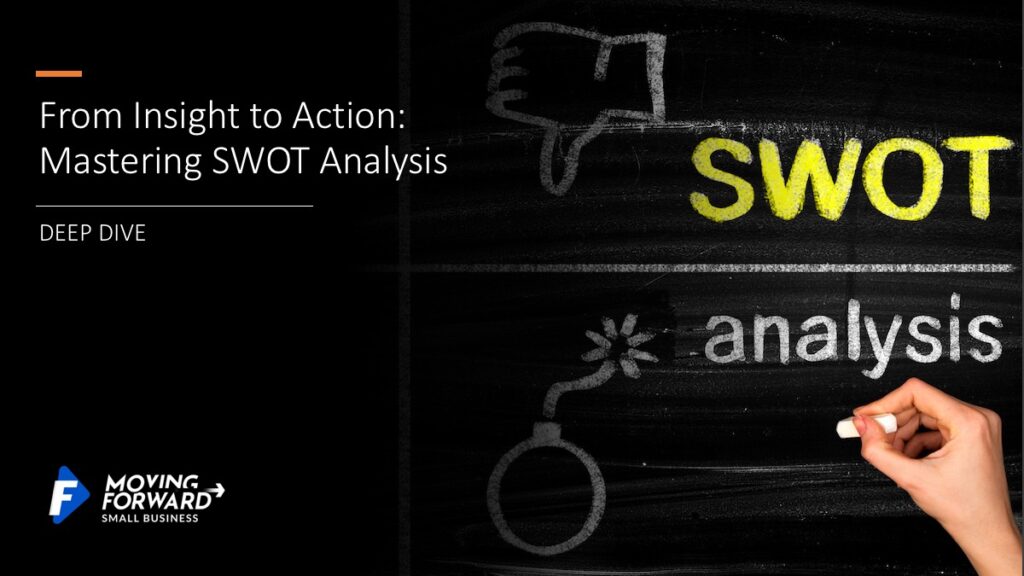Key Highlights
- SWOT analysis is a strategic planning technique used to evaluate a company’s competitive position and develop strategic plans.
- It assesses internal and external factors and helps identify strengths, weaknesses, opportunities, and threats.
- Weaknesses in SWOT analysis refer to internal factors that hinder a company’s performance and competitive advantage.
- Common misconceptions about weaknesses in SWOT analysis include thinking they are permanent and cannot be turned into strengths.
- Weakness examples across industries include technology companies, retail sectors, and the manufacturing industry.
- Case studies provide real-life examples of how companies have addressed and turned their weaknesses into strengths.
- Strategies to mitigate weaknesses include developing action plans, leveraging external opportunities, and strengthening internal measures.
- Ignoring weaknesses in SWOT analysis can lead to long-term risks and negative impacts on business decisions and strategic planning.
- Frequently asked questions about weaknesses in SWOT analysis include what makes a weakness, if weaknesses can be turned into strengths, how often weaknesses should be re-evaluated, and if there are industry-specific weaknesses.
Introduction
SWOT (strengths, weaknesses, opportunities, and threats) analysis is a framework used by businesses to evaluate their competitive position and develop strategic plans. It assesses internal and external factors to identify the company’s strengths, weaknesses, opportunities, and threats. This analysis provides valuable insights into the business’s current state and helps in making informed decisions to improve performance and achieve strategic goals, including generating new ideas. The acronym “SWOT” stands for these four factors, making it a useful and easily remembered tool for businesses.
Understanding the weaknesses in SWOT analysis is crucial for businesses as it enables them to identify internal factors that hinder their performance and competitive advantage. By recognizing weaknesses, businesses can develop strategies to address them and turn them into strengths. This blog will explore the role of weaknesses in SWOT analysis, common misconceptions about weaknesses, key weakness examples across industries, notable business case studies, strategies to mitigate weaknesses, and the impact of ignoring weaknesses in SWOT analysis.
📅 Watch Replay and Get Resources
From Insight to Action: Mastering SWOT Analysis

Understanding SWOT Weaknesses in Business
In the context of SWOT analysis, weaknesses refer to internal factors that hinder a company’s performance and competitive advantage. These weaknesses can be related to various aspects of the business, including internal processes, resources, human capital, technology, and customer relationships. Identifying weaknesses is an essential step in the SWOT analysis. It helps businesses understand the areas where they need improvement, develop strategies to overcome them, and create a baseline for success and failure. Understanding these SWOT weaknesses is crucial for businesses to thrive in a competitive market.
SWOT analysis is a powerful framework that provides businesses with a comprehensive understanding of their internal and external environment. It allows companies to identify their strengths, weaknesses, opportunities, and threats, which serve as the foundation for strategic planning. By identifying weaknesses through a competitive analysis, businesses can address the internal factors that may be limiting their growth and competitiveness, ultimately helping them create or update their business plan.
Competitive advantage plays a crucial role in SWOT analysis, as it helps businesses differentiate themselves from their competitors. By understanding their weaknesses, companies can work towards minimizing or eliminating them to enhance their competitive advantage. This involves leveraging strengths and opportunities to mitigate weaknesses and improve overall business performance.
Strategic planning is closely linked to SWOT analysis as it helps companies align their resources, capabilities, and objectives. By considering weaknesses in the strategic planning process, businesses can develop action plans to address them and improve their overall performance. This involves setting realistic goals, allocating resources effectively, and continuously monitoring and evaluating progress.
The Role of Weaknesses in SWOT Analysis
Weaknesses play a crucial role in SWOT analysis as they provide insights into the internal factors that can hinder a company’s performance and competitive advantage. By identifying weaknesses, businesses can develop strategies to address them and minimize their impact on overall business goals.
Internal strengths refer to the unique capabilities and resources that a company possesses. These strengths can be leveraged to overcome weaknesses and enhance performance. By aligning weaknesses with internal strengths, businesses can develop a strategic plan that focuses on improving areas of weakness and maximizing the potential of their strengths.
Strategic planning involves defining a business’s long-term goals and objectives and developing a roadmap to achieve them. Weaknesses identified in the SWOT analysis can be integrated into the strategic planning process to ensure that they are addressed and overcome. This involves setting specific actions and milestones to improve weak areas and aligning them with broader business goals.
By considering weaknesses in the strategic planning process, businesses can create a roadmap for success that addresses internal limitations and maximizes their potential for growth and competitiveness. This holistic approach allows companies to take a comprehensive view of their internal factors and develop strategies that leverage strengths, address weaknesses and potential weaknesses in their business model, and align with business goals.
Common Misconceptions About Weaknesses in SWOT
Common misconceptions about weaknesses in SWOT often stem from viewing weaknesses solely as negative attributes. However, weaknesses are internal factors that offer insight into areas of improvement, not just threats. Another misconception is equating weaknesses with failure; instead, they present opportunities for growth. Understanding that weaknesses are integral to strategic planning can revolutionize how businesses approach their SWOT analyses.
Key Weakness Examples Across Industries
Weaknesses vary across industries. In technology companies, reliance on outdated systems can hinder innovation, while poor inventory management impacts customer satisfaction in retail. Manufacturing may face supply chain disruptions affecting product delivery. Understanding these weaknesses is crucial for strategic planning and business decisions. For instance, a tech company should prioritize updating its product line to remain competitive. Recognizing weaknesses is the first step in developing effective strategies to mitigate risks and drive business growth.
Weaknesses in Technology Companies
In the realm of technology companies, weaknesses can significantly impact operations. Issues in adapting quickly to market trends and technological advancements can undermine a company’s competitive advantage. Challenges related to cybersecurity, such as data breaches, can erode customer trust. Moreover, heavy reliance on a particular product or service line may expose vulnerability to sudden market shifts and cons. Ensuring a robust supply chain and continuous innovation are essential to counter these weaknesses and sustain growth in the dynamic tech sector.
Weaknesses in Retail Sector
In the retail sector, weaknesses can stem from various sources, such as fluctuating consumer preferences, intense competition, or inefficient supply chain management. For example, reliance on physical stores alone may limit reach in the digital age. Ineffective use of customer data for personalized marketing or underdeveloped online platforms could hamper growth. Addressing these weaknesses through strategic planning, enhancing customer service, and adapting to technological advancements can help retailers stay competitive and foster long-term success.
Weaknesses in Manufacturing Industry
In the manufacturing industry, weaknesses may stem from outdated machinery, inefficient processes, or poor quality control. Issues related to supply chain disruptions, high production costs, and limited innovation budgets can also impact competitiveness. Embracing digital transformation and investing in automation could address these weaknesses. Streamlining operations, optimizing inventory management, and enhancing workforce skillsets are vital for staying ahead in the ever-evolving manufacturing landscape.
Deep Dive into Notable Business Case Studies
Case Study 1: In the technology sector, X Corporation faced a significant weakness in outdated software systems. They streamlined operations by investing in a comprehensive upgrade, enhancing efficiency and customer service.
Case Study 2: A leading retail chain addressed declining foot traffic by revamping its online presence and introducing a loyalty program, boosting customer engagement and sales.
Case Study 3: A manufacturing company revamped its supply chain management processes, reducing costs and improving product quality, leading to increased market share.
Case Study 1: How a Tech Giant Overcame Its Weakness
This tech leader faced high competition and technological disruptions in a fierce market. Identifying an outdated product line as a weakness, the company swiftly invested in innovations. It regained a competitive edge by revamping its internal processes and strategic planning. Leveraging its internal strengths in R&D and nimble decision-making, the firm successfully launched new products, enhancing market share and solidifying its position. This case exemplifies the power of proactive weakness mitigation in sustaining business success.
Case Study 2: Retail Chain’s Strategy to Address Its Weaknesses
Implementing a comprehensive strategy to tackle weaknesses, a prominent retail chain focused on enhancing its supply chain efficiency. The company aimed to reduce operational costs and improve customer satisfaction by streamlining logistics and optimizing inventory management. Additionally, investing in employee training programs elevated service quality and boosted customer retention rates. These proactive initiatives addressed existing weaknesses and positioned the retail chain for sustainable growth amidst competitive market dynamics.
Case Study 3: Manufacturing Company’s Turnaround from Its Weaknesses
Case Study 3: A manufacturing company facing operational inefficiencies and outdated technology successfully revamped by implementing robust process reengineering and investing in modern machinery. The company regained its competitive edge by enhancing production efficiency and streamlining supply chain logistics. Through strategic planning and reorganization of human resources, the company managed to transform its weaknesses into strengths, resulting in increased productivity and improved profitability. This case exemplifies how proactively identifying and addressing weaknesses can lead to substantial business growth and sustainability.
Strategies to Mitigate Weaknesses
Internal measures play a pivotal role in fortifying weak areas within a business. Companies can bolster their competitive advantage by refining internal factors like human resources, product line optimization, and enhancing customer service standards. Additionally, leveraging external opportunities such as expanding market share or diversifying the customer base can help offset weaknesses. Strategic planning that integrates these initiatives is essential to mitigate vulnerabilities effectively and enhance overall business performance. Recognizing and proactively addressing weaknesses through a cohesive strategy is paramount for sustained success.
Internal Measures to Strengthen Weak Areas
There are various internal measures to bolster weak areas within a business. Proactive steps like enhancing human resources capabilities, refining product lines, and optimizing the supply chain can mitigate weaknesses. Investing in employee training to improve skills and efficiency, upgrading technologies for better operational performance, and conducting regular performance assessments are effective strategies. Moreover, fostering a continuous improvement and innovation culture can further strengthen internal weaknesses, positioning the company for long-term success.
Leveraging External Opportunities to Offset Weaknesses
One effective strategy for businesses is leveraging external opportunities to offset weaknesses. Companies can mitigate their internal factors by identifying opportunities in the competitive landscape or market trends. For instance, if a retail chain faces a weakness in its online presence, collaborating with popular e-commerce platforms can enhance its digital reach. This approach aligns with strategic planning and can provide a competitive advantage in expanding market share and strengthening their position in the industry, ultimately leading to a loyal customer base. After identifying and analyzing their weaknesses, the next step for businesses is to take advantage of external opportunities to improve and overcome them.
The Impact of Ignoring Weaknesses in SWOT Analysis
Ignoring weaknesses in SWOT analysis can lead to detrimental consequences for businesses. Short-term effects may include missed opportunities for improvement, while long-term risks involve a decline in competitive advantage and potential failure to adapt to market changes. By overlooking weaknesses, companies jeopardize their ability to make informed strategic decisions and may fail to achieve sustainable growth. Neglecting weaknesses in SWOT analysis could result in a failure to address critical internal factors that could impede progress and hinder overall success.
Short-term Consequences
Ignoring weaknesses in SWOT analysis can lead to immediate repercussions such as missed growth opportunities, decreased competitiveness, and ineffective decision-making. Businesses may struggle to adapt to market changes, lose valuable market share, and face challenges in maintaining customer satisfaction. Neglecting to address weaknesses promptly can hinder business performance, erode profits, and damage brand reputation in the short term. These consequences highlight the critical importance of a comprehensive SWOT analysis to identify and mitigate weaknesses proactively.
Long-term Business Risks
Failing to address long-term business risks unearthed in a SWOT analysis can precipitate lasting repercussions. Ignoring these vulnerabilities may lead to decreased competitiveness, loss of market share, or even business failure in the long run. Overlooking weaknesses could hinder strategic planning and impede the company’s ability to adapt to dynamic market conditions. Long-term risks can escalate if not managed effectively, impacting the business’s overall sustainability and growth trajectory. Strategic mitigation strategies are imperative to navigate these potential threats.
Conclusion
In analyzing SWOT weaknesses in business, it’s crucial to understand their role and impact across industries. By delving into notable case studies, like how a tech giant navigated weaknesses or a retail chain’s strategic approach, valuable insights emerge for mitigating weaknesses. Internal measures and leveraging external opportunities play pivotal roles in shoring up weak areas. Ignoring weaknesses can lead to short-term consequences and long-term business risks. Re-evaluating weaknesses periodically is key to staying agile and competitive in the dynamic business landscape. Industry-specific weaknesses in SWOT must be carefully considered for a comprehensive analysis.
📅 Watch Replay and Get Resources
From Insight to Action: Mastering SWOT Analysis

Frequently Asked Questions
What Makes a Weakness in SWOT Analysis?
A weakness in SWOT analysis is an internal factor that hinders a business’s growth or competitiveness. It could include resource limitations, outdated technology, or poor brand reputation. Identifying and addressing these weaknesses is crucial for strategic planning and sustainable success.
Can a Weakness be Turned into a Strength?
Strategic planning and resource allocation can turn a weakness into a strength. Businesses can transform vulnerabilities into competitive advantages by identifying weaknesses early on and implementing targeted improvement initiatives. Embracing challenges can lead to innovation and growth.
How Often Should Weaknesses be Re-evaluated in SWOT Analysis?
Weaknesses in SWOT analysis should be re-evaluated periodically, ideally during strategic planning sessions or when significant changes occur. Regular reassessment ensures alignment with the dynamic business environment and aids in adapting strategies effectively.
Are There Industry-Specific Weaknesses in SWOT Analysis?
Exploring industry-specific weaknesses in SWOT analysis unveils tailored challenges. Tech firms may face rapid obsolescence, retailers encounter shifting consumer trends, while manufacturers struggle with supply chain disruptions. Understanding these nuances optimizes strategic planning.


